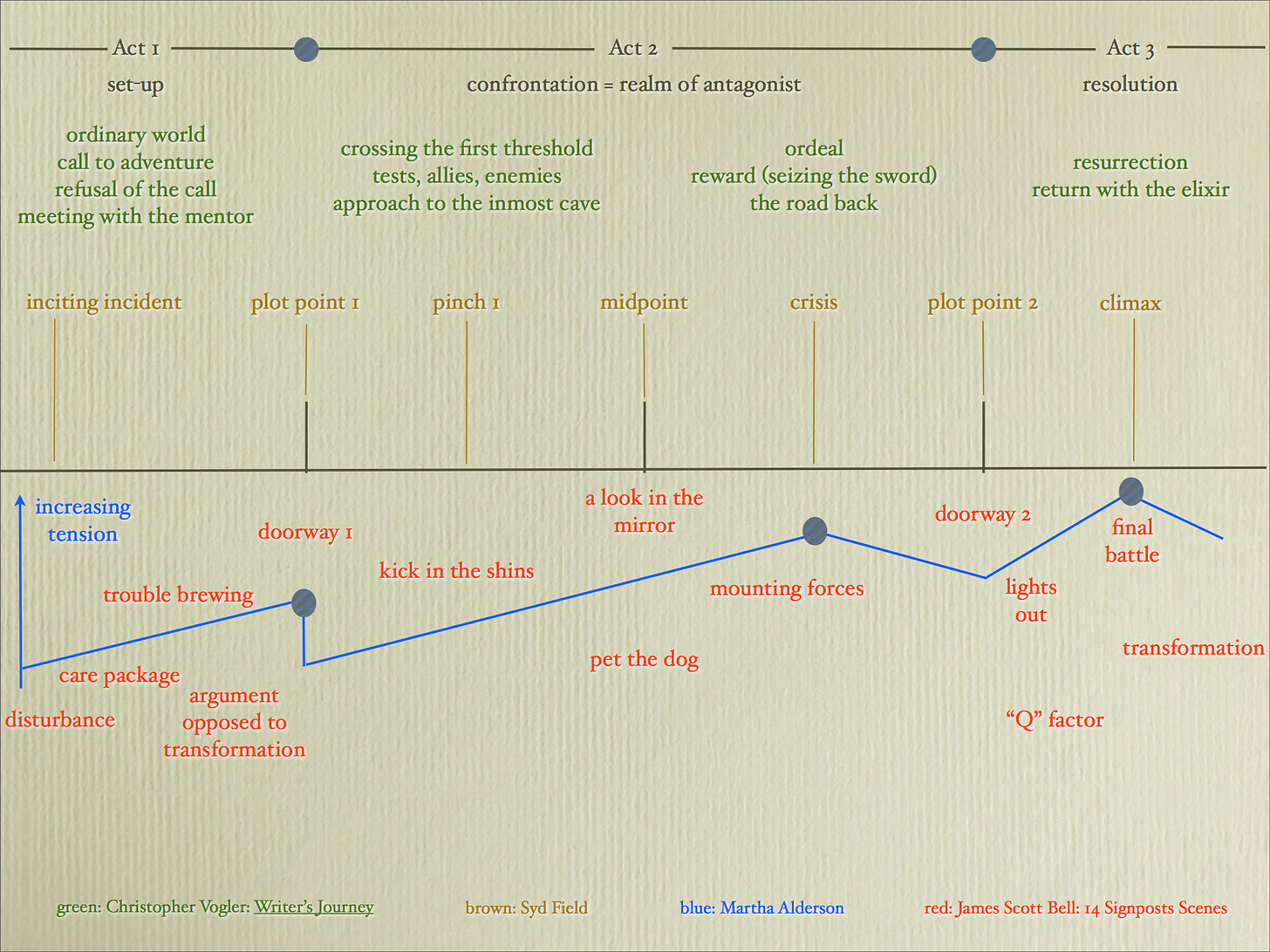Plot turning points in fiction.
The easiest way to describe them is this: they are places in your plot where the action of the story turns in a completely new direction due to the actions of the main character.
For example, when in The Hunger Games: Mockingjay (spoiler alert!) Katniss is supposed to execute her archenemy President Snow but instead shoots the (rapidly-becoming-a-dictator) Coin, that shocking turn of events is the turning point “climax” of the story.
There are any number of turning points identified by any number of craft writers from Blake Snyder’s Beat Sheet to Christopher Vogler’s Hero’s Journey, but there are five key points you should do your best to hit.
The 5 Key Turning Points
Inciting Incident: The inciting incident of a story is the action that kicks off the external plot and sends the characters into the story arc. In The Hunger Games, it’s the moment when Katniss cries “I volunteer as tribute!” The inciting incident usually occurs within the opening pages of a novel – it’s probably the most obvious of all the points.
Entering Act 2: (AKA Plot Point 1) When the main character enters Act 2 of a story, she has no choice but to go forward by taking actions and making things change, including herself. The character leaves the “real world” and enters the “special world” (Vogler’s terms) of the story, during which she will face complications and obstacles.
Midpoint: The midpoint of the story is a tentpole moment. Up to the midpoint the main character can do nothing right. She keeps making mistake after mistake and the outcome for her is not clear. But at the midpoint, she will review her previously bad decisions and resolve to try a different approach, which will (in a hero’s journey) prove to be more successful thereafter.
Climax: At the climax of the story the main character has risen to the occasion and in this moment will not only defeat the antagonist, but also be irrevocably changed by the journey. Frodo will make it to Mount Doom. Luke Skywalker will stand up to the emperor. (Note that these two examples have internal twists, as Gollum actually destroys the ring and Darth Vader actually destroys the emperor, but that’s a discussion for another post).
Resolution: The main character returns to the real world but completely changed, and having resolved the external story problem. Katniss goes home with Peeta, has a family, lives a happy life having helped destroy the basis for the Games, but she will never be the same undamaged person, as she’s lost so many other people in the bargain. Frodo has to sail away to the Undying Lands because he’s so broken. Even Luke will never find true internal peace.
Hitting just these five key points will make the difference between a story that follows the classic story arc, and a story that may sag in the middle or lack tension and momentum.
But Let’s Talk About How To Use Them
Turning points are big moments. They should stand out as scenes of high drama and/or action. Knowing that you need them will help you avoid a saggy middle.
When I’m writing my first and even second drafts, I don’t think about turning points. I think about how my character is growing, changing, making mistakes in her pursuit to resolve the external problem, and then learning from those mistakes to also resolve her internal desire.
Only after I’ve written a full draft and begin to work through my story with an eye to plot arc and conflict do I see if I’ve hit the marks of the turning points. Because those points are moments of high tension, moments when things change in a big way, if my story is flagging, I’m missing those moments. I go in and create a scene or scenes in which those turning points are clear and the main character is herself changing and is also actively changing things for the story.
If you’re writing picture books, do check out my picture book plot paradigm which speaks to this as well.
If You Need Motivational and/or Craft Help…
…check out my friend and colleague Julie Artz’s free program: “Twelve Weeks to Your Next Draft”. It’s a FREE email course that helps writers make real progress on their novel or memoir before the end of 2024.
She’s distilled her novel writing technique down into twelve essential lessons that will help you finish your draft, no matter whether it’s a messy zero draft or your final polishing pass. And she’ll be hosting live Ask Me Anythings and Write-ins throughout October, November, and December to get the community and craft learning that will help you get to The End!
This free event begins October 7, but you can join at any time and registration is required:
And as always, I have a number of kidlit craft writing courses, from free to cheap to extensive, and you can find them all right here:






I love nothing better than a good Hero's Journey! Thanks for the reminder to look over my turning points.